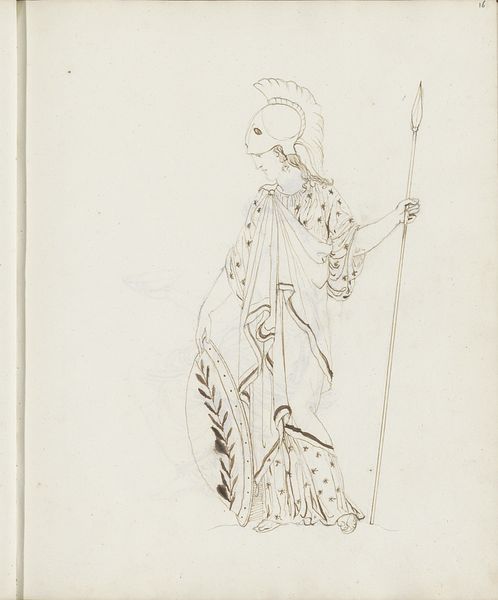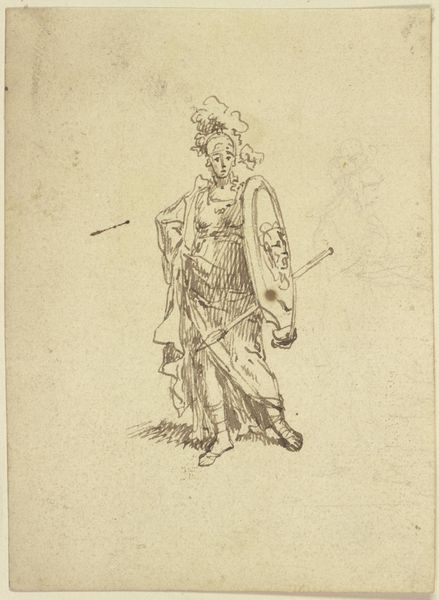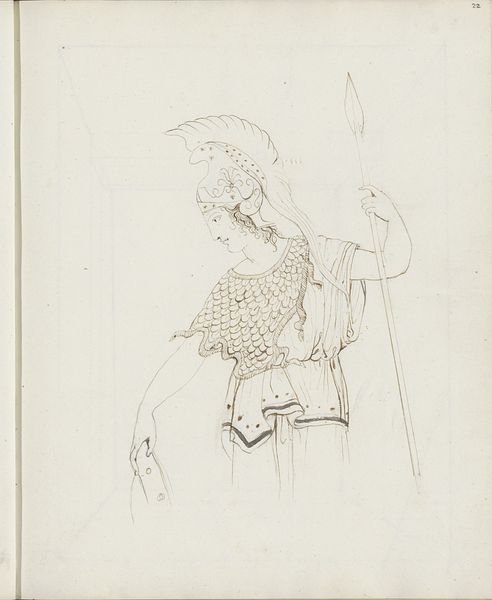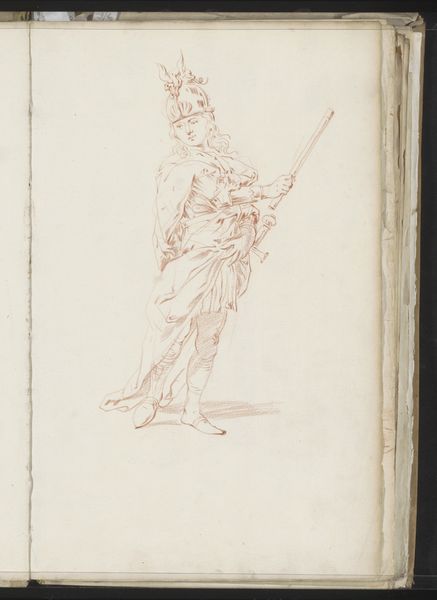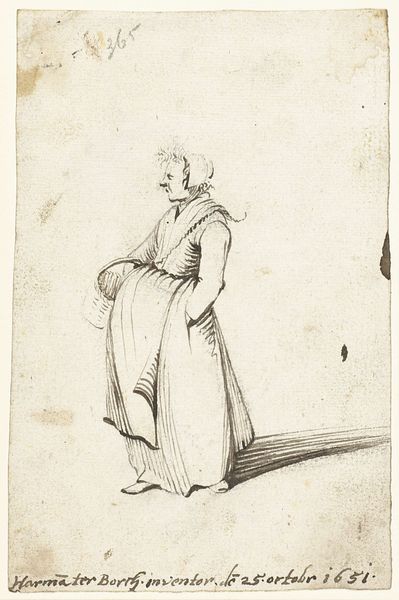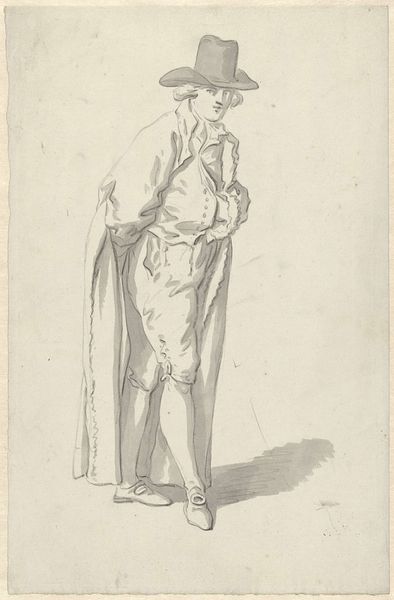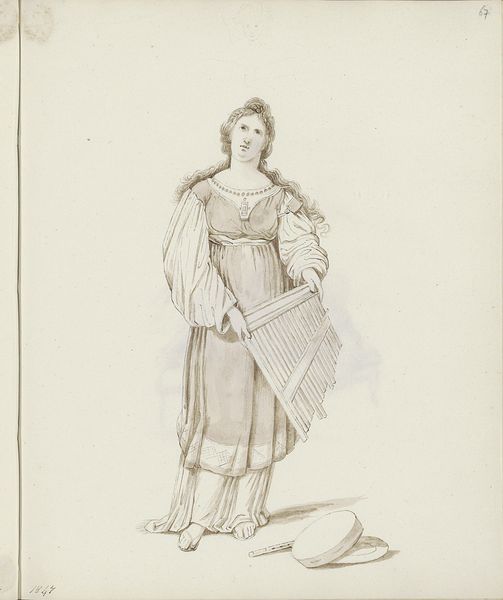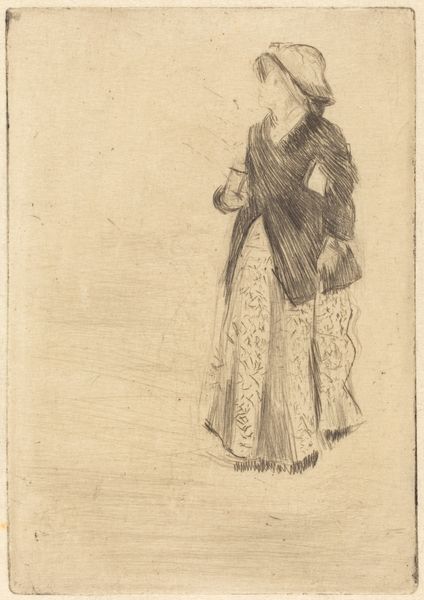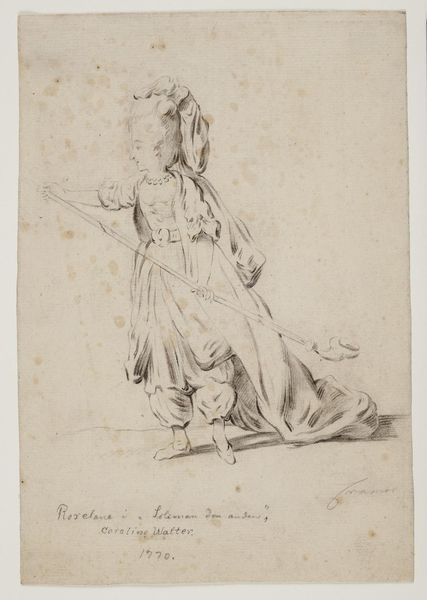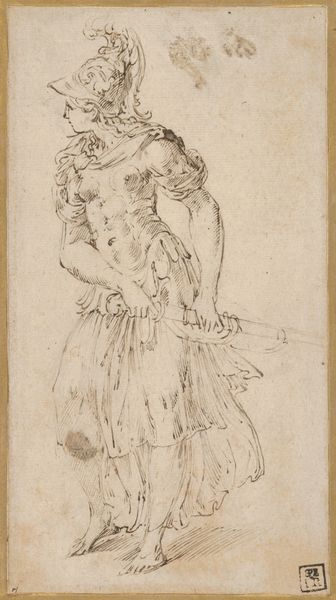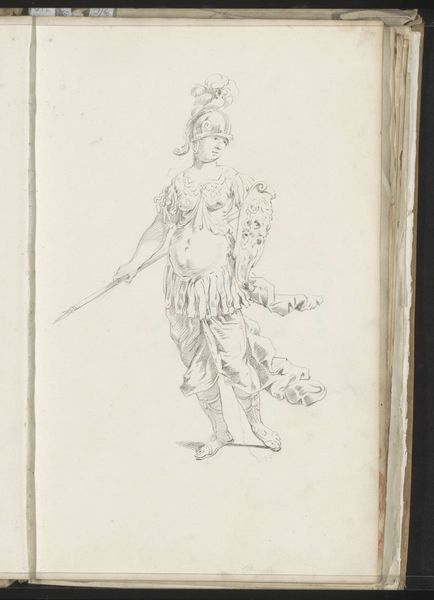
drawing, pen
#
portrait
#
drawing
#
imaginative character sketch
#
neoclacissism
#
light pencil work
#
quirky sketch
#
classical-realism
#
figuration
#
personal sketchbook
#
idea generation sketch
#
sketchwork
#
sketchbook drawing
#
pen
#
history-painting
#
storyboard and sketchbook work
#
fashion sketch
#
sketchbook art
Copyright: Rijks Museum: Open Domain
Editor: Here we have "Pallas Athena in wapenrusting," a drawing made in 1819. It’s a delicate, almost ghostly image of Athena, poised and armed, yet rendered in very light pencil work. What do you see in this piece? Curator: I see an interesting interplay between power and representation, particularly in the context of 19th-century Neoclassicism. This rendering of Athena invites us to question the very construction of gendered power dynamics during this period. It's a light pencil work of Athena in armor. Do you notice how this sketch departs from the traditionally robust and imposing depictions of the goddess of wisdom? Editor: Yes, it’s much softer, less overtly powerful. More human, perhaps? Curator: Precisely. Think about who the patron or the artist may have been, and how their identity may have played a role in reimagining this iconic figure. Is this fragility a commentary on the limited roles afforded to women, or perhaps a subversion of the hyper-masculine ideals celebrated in art? Moreover, the lightness of the sketch, and the fact that it reads as a personal sketchbook notation makes one consider: what did it mean to contemplate powerful women in 1819? Editor: So, it's less about the goddess herself and more about what she represents within the social context of the time? Curator: Exactly. How can we use Athena to re-examine early nineteenth century European patriarchal society, with this light drawing? Editor: That completely shifts my perspective. I was initially focused on the classical imagery, but the cultural context gives it so much more depth. Curator: And, that, in turn, lets us see the role of art history within gender studies.
Comments
No comments
Be the first to comment and join the conversation on the ultimate creative platform.
